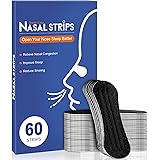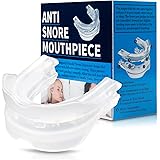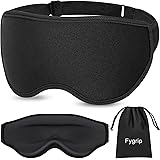Choosing the Best Mattress for Lower Back Pain Relief
An estimated 80% of adults will experience lower back pain at some point in their lives, making it a prevalent issue that significantly impacts daily comfort and sleep quality. When struggling with this common ailment, the importance of a supportive sleep surface simply cannot be overstated. As insightfully shared in the video above, there are specific considerations that should be made when a new mattress for lower back pain is being sought, especially concerning firmness and marketing jargon.
The guidance provided in the video serves as a critical first step for anyone looking to alleviate their discomfort through better sleep. It is often believed that a softer mattress might provide more comfort for a sore back, but this perception is typically far from beneficial. Instead, the focus should be directed towards a sleeping solution that offers both steadfast support and appropriate pressure relief.
Why Soft Mattresses Can Aggravate Lower Back Pain
When a mattress is too soft, the body tends to sink too deeply, especially around the hips and shoulders. This excessive sinking prevents the spine from maintaining its natural alignment during sleep. Imagine trying to walk on soft sand versus solid ground; the sand offers little resistance, making movement inefficient and potentially strain-inducing.
A soft mattress allows the heaviest parts of your body to dip, which can cause the spine to curve unnaturally. This misalignment places stress on the ligaments and muscles in the lower back, potentially leading to increased pain or even new discomfort upon waking. Optimal spinal alignment, crucial for pain management, cannot be achieved when the mattress fails to provide sufficient resistance.
The lack of proper spinal alignment often means that the muscles that support your back are forced to work overtime throughout the night. Instead of relaxing and recovering, these muscles can remain tense, contributing to persistent aches. Thus, the idea that a plush surface is inherently comforting for an aching back is often misleading, as it sacrifices the necessary structural support.
Decoding Mattress Marketing: Beyond ‘Orthopedic’ and ‘Therapeutic’
When searching for a mattress for lower back pain, consumers are frequently exposed to various marketing terms designed to imply superior health benefits. Words like “orthopedic” and “therapeutic” are often encountered, suggesting specialized design for back health. However, as highlighted in the video, these terms often mean very little in terms of regulated standards or proven efficacy.
There are no specific governmental or industry regulations that define what constitutes an “orthopedic” or “therapeutic” mattress. This means that any manufacturer can use these labels without having to meet specific criteria for spinal support or pain relief. Therefore, rather than relying on such unsubstantiated claims, the actual construction and feel of the mattress should be prioritized.
What should truly be sought is a mattress that is demonstrably firm, yet still offers adequate pressure relief. This combination is what truly aids in maintaining natural posture and reducing discomfort. Disregard the marketing fluff and focus on how your body feels when lying on the mattress itself, paying close attention to support around your spine.
The Ideal Combination: Firm Support with Pressure Relief
The optimal mattress for lower back pain is one that provides a firm foundation while also cushioning pressure points. Think of it like a perfectly supportive shoe; it cradles your foot firmly but still offers a soft landing with each step. A truly effective mattress needs to offer consistent support across your entire body, preventing any part from sinking too much.
Firmness ensures that your spine remains in a neutral, natural position, similar to how it would be if you were standing with good posture. This prevents the unhealthy curvature that can exacerbate lower back pain. However, firmness alone can sometimes create discomfort by pushing too hard on areas like the hips and shoulders, leading to new aches.
This is where pressure relief becomes crucial. A mattress with good pressure relief will subtly contour to the body’s curves, distributing weight evenly and reducing stress on prominent pressure points. Materials like memory foam or latex, when incorporated into a firmer base, can excel at this. The goal is to feel supported without feeling stiff or experiencing localized pressure.
Factors to Consider When Selecting Your Mattress
Beyond firmness and pressure relief, several other factors should be taken into account when choosing a mattress for lower back pain. Each individual’s needs can vary significantly based on their unique body type, sleeping habits, and specific pain points. Personal preferences play a large role in what ultimately feels comfortable and supportive.
-
Sleeping Position: Your preferred sleeping position has a major impact on the type of support needed. Side sleepers often require a bit more contouring to accommodate their shoulders and hips, while back and stomach sleepers generally benefit from a firmer, more even surface to prevent excessive spinal curvature.
-
Body Weight: Heavier individuals may require a firmer mattress to prevent excessive sinking and ensure adequate support. Lighter individuals might find a medium-firm mattress to be sufficient. The mattress should be able to support your body without bottoming out.
-
Mattress Type: While the video doesn’t specify types, options like innerspring with firm top layers, memory foam, latex, or hybrid mattresses (combining springs and foam) can all offer varying degrees of ergonomic support. Researching the pros and cons of each type in relation to back pain can be beneficial.
-
Trial Periods: Many mattress companies offer generous in-home trial periods (often 90 to 120 nights). This is an invaluable opportunity to test the mattress in your own environment, allowing your body to adapt and truly determine if it provides the necessary pain management and comfort.
Optimizing Your Sleeping Posture for Back Health
Even the best mattress for lower back pain can fall short if your sleeping posture is not adequately addressed. As briefly mentioned in the video, the position you adopt for sleep can significantly influence your back health. Simple adjustments to your sleeping posture can make a profound difference in alleviating discomfort and promoting proper spinal alignment.
For back sleepers, placing a small pillow under your knees can help maintain the natural curve of your lower back, reducing strain. This slightly elevated position often provides a feeling of weightlessness and support. The main pillow used for your head should adequately fill the gap between your neck and the mattress, keeping your head in line with your spine.
Side sleepers are encouraged to place a pillow between their knees. This simple action helps to keep the hips, pelvis, and spine aligned, preventing the upper leg from pulling the spine out of position. A relatively thick pillow is often needed for the head and neck to keep the spine straight from head to tailbone. Stomach sleeping, while often comfortable for some, is generally discouraged for back pain sufferers as it tends to flatten the natural curve of the spine and can strain the neck.
Ultimately, selecting the correct mattress for lower back pain is a crucial investment in your health and well-being. By focusing on firm support combined with effective pressure relief, and by mindfully optimizing your sleeping posture, you can significantly improve your sleep quality and reduce discomfort. Remember, individual needs vary, so patience and careful consideration are paramount in finding your ideal sleep solution.








